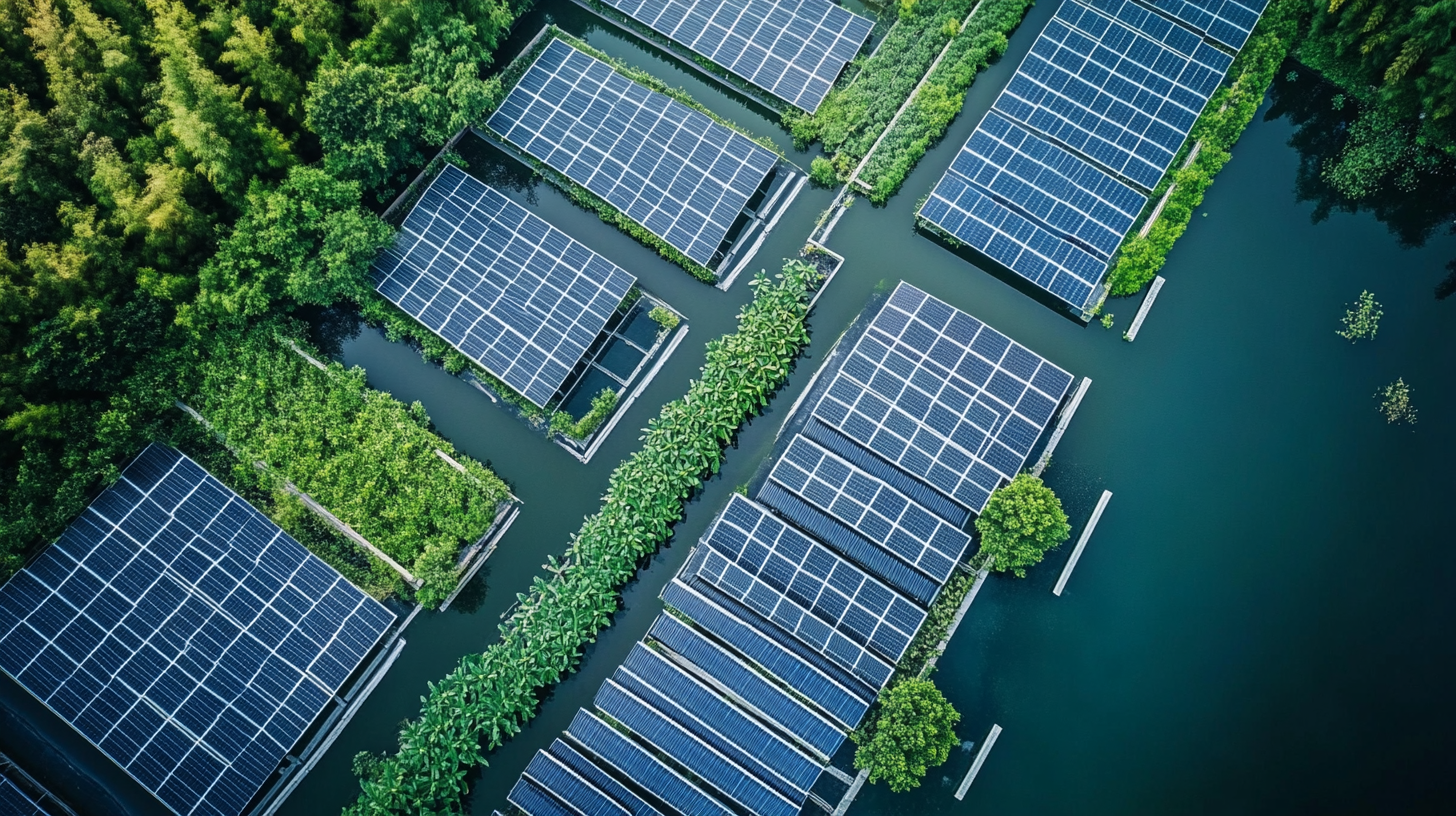


In the quest for sustainable energy solutions, innovative technologies are increasingly taking center stage, and one of the most promising advancements is the Heat Pump. This versatile technology not only offers significant energy savings but also contributes to reducing greenhouse gas emissions. As global awareness about climate change rises and demands for energy-efficient systems grow, harnessing the potential of heat pumps becomes essential for both residential and commercial applications.
Heat pumps work by transferring heat rather than generating it through combustion, making them an eco-friendly alternative to traditional heating and cooling methods. By utilizing renewable energy sources from the environment—such as air, water, or ground—heat pumps can provide efficient temperature regulation with minimal environmental impact. This blog will explore the various ways to leverage heat pump technology, highlighting its advantages and examining how it integrates into broader sustainable energy strategies.

Heat pump technology has emerged as a pivotal solution for homeowners seeking sustainable energy alternatives. At its core, heat pumps work by transferring heat from one place to another, effectively utilizing external temperature as a source. This technology can be broadly categorized into air-source and geothermal heat pumps. Recent shifts in consumer demand showcase a growing interest in geothermal heat pumps due to their superior energy efficiency, particularly in comparison to their air-source counterparts. However, homeowners should be mindful of the initial costs associated with drilling wells, which can be significant. As the market for heat pumps expands, advancements in technology are making these systems increasingly accessible to a wider range of climate zones. Improved efficiency ratings and reduced operational costs make heat pumps a compelling option for those looking to minimize their carbon footprint. Additionally, innovations such as heat pump clothes dryers exemplify the versatility of this technology, offering benefits such as reduced energy consumption and the elimination of venting requirements. Embracing heat pump technology not only contributes to energy sustainability but also enhances the comfort and efficiency of the home environment.

When it comes to selecting the right heat pump for your home, understanding the various types available can significantly influence both your comfort and energy costs. Heat pumps, particularly reverse-cycle air conditioners, have gained recognition as a highly efficient option for residential heating. According to a 2023 report from the Australian Energy Market Operator (AEMO), these systems can provide up to four times the energy output compared to the energy input, making them a financially attractive alternative to traditional electric and gas heaters.
There are a few predominant types of heat pumps to consider. Air-source heat pumps extract heat from the outside air, even in colder conditions, and are generally easier and less expensive to install. Ground-source heat pumps, or geothermal systems, tap into the earth's stable temperature for heating and cooling, but they come with higher upfront installation costs. Data from the U.S. Department of Energy indicates that while ground-source systems can save homeowners 30-60% on heating and cooling bills, air-source variants are often more accessible for retrofitting existing homes.
When choosing the right heat pump for your needs, it’s essential to consider the specific climate of your area, energy prices, and the system's efficiency rating. The Seasonal Energy Efficiency Ratio (SEER) and Heating Seasonal Performance Factor (HSPF) are key metrics to look for. A higher SEER rating indicates better energy performance, which is especially important as energy costs continue to rise. With the right choice, a heat pump can significantly reduce your carbon footprint while also saving you money throughout the heating season.

Integrating heat pump technology into existing energy systems presents a pivotal opportunity for enhancing sustainability in both residential and commercial buildings. As we face the increasing influx of renewable energy sources, the need for efficient systems that can seamlessly accommodate these changes is paramount. Heat pumps serve as an effective solution by providing significant energy savings and reducing carbon footprints. In commercial buildings, for instance, the adoption of heat pump systems can reduce energy consumption by as much as half, aligning perfectly with the goals of decarbonization and sustainability.
Moreover, the industrial sector stands to benefit immensely from integrating heat pumps into its energy infrastructure. By utilizing these systems, industries can not only decarbonize their processes but also recover waste heat, creating a more efficient overall operation. This dual capability of heating and cooling allows for better energy management, particularly in district heating projects where heat can be generated centrally and distributed effectively to residences and businesses.
As energy system integration evolves, it is crucial for grid operators to rethink their strategies. By embracing heat pumps, operators can create stronger links between electricity and thermal energy systems. This integration may involve upgrading chilling equipment to industrial heat pumps or developing comprehensive frameworks for ground source heat pump utilization. Ultimately, leveraging heat pump technology is not just about enhancing existing systems; it is about paving the way for a resilient, sustainable energy future.

Heat pumps represent a transformative technology in the quest for sustainable energy solutions. Optimizing their efficiency is essential not only for reducing energy consumption but also for maximizing financial savings. According to the U.S. Department of Energy, heat pumps can be three to four times more efficient than traditional heating systems, which translates into significant reductions in both energy bills and greenhouse gas emissions.
To further enhance heat pump efficiency, regular maintenance is crucial. A recent study from the National Renewable Energy Laboratory (NREL) indicates that properly maintained heat pumps can operate up to 25% more efficiently than neglected units. Simple actions, such as cleaning filters, ensuring unobstructed airflow, and checking refrigerant levels, can lead to considerable performance improvements. Moreover, incorporating smart thermostats allows homeowners to optimize operational schedules, ensuring the heat pump runs only when needed, thus further reducing energy usage and costs.
Installation also plays a vital role in maximizing heat pump efficiency. The Air-Conditioning, Heating, and Refrigeration Institute (AHRI) suggests that proper sizing and placement of heat pumps can enhance their effectiveness by nearly 20%. It’s essential to conduct thorough load calculations during the design phase to ensure that the system is neither over nor undersized, which can lead to inefficiencies. By leveraging advanced technology and adhering to best practices in maintenance and installation, consumers can fully harness the potential of heat pumps, achieving both environmental and economic benefits.
The implementation of heat pump technology presents both significant challenges and promising solutions for sustainable energy initiatives. One of the primary hurdles lies in the initial investment required for heat pump systems. Though they offer long-term savings and efficiency, the upfront costs can deter businesses and homeowners from adopting this innovative technology. Moreover, the installation process often demands skilled labor and careful planning to ensure optimal performance, which can further complicate widespread adoption.
Recent advancements, however, are paving the way for the effective integration of heat pumps. For instance, the introduction of high-efficiency models that utilize advanced thermal management techniques is proving instrumental in overcoming traditional barriers. These new systems not only enhance heating efficiency but also adapt to varying climatic conditions, making them suitable for a broader range of environments. As seen in the latest exhibitions and conferences, industry leaders are actively showcasing these technological breakthroughs, which emphasize not just energy savings but also reduced carbon footprints.
Additionally, as organizations increasingly commit to sustainability, there is a growing trend towards investments in heat pump technologies. Many sectors are recognizing the dual benefits of economic savings and environmental responsibility. By adopting this innovative technology, industries stand to gain competitive advantages while contributing to global efforts in carbon reduction and energy sustainability.
